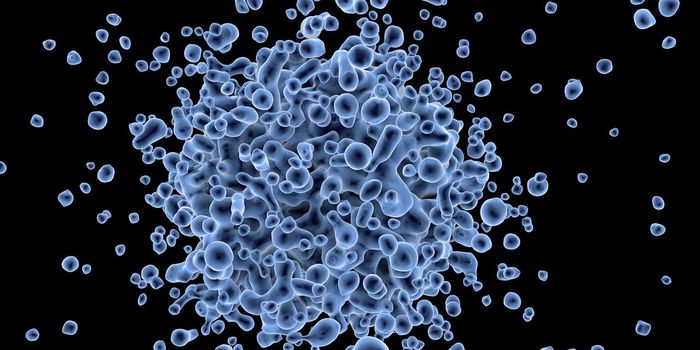DNA replication likes one direction. Not the boy band, but rather it prefers to replicate in a certain direction over the other. Publishing their
findings in Science Advances, scientists have discovered an enzyme that can perform the procedure in the opposite direction and characterized how it works - a complex process. The video below explains the typical process of DNA replication.
Considering a single strand of DNA or RNA, one end is designated as the 5′-end (five prime end), because in the chemical structure of the molecule it frequently has a phosphate group attached to what's called the 5′ carbon of the ribose ring, while the 3′-end (three prime end) typically terminates with a hydroxyl group on the third carbon of the ring. In the DNA double helix, the two joined strands run in opposite directions, thus allowing base pairing between them, a feature that is essential for both replication and transcription of the genetic information.
To replicate DNA and RNA nucleotide chains, new copies are synthesized from existing ones. This copying process always happens in a "forward" direction, from the 5’ to the 3’ end. During the process the double-stranded DNA is separated into two strands and aligned in opposite directions, complicating the matter.
"When DNA is replicated, one of the two chains can be copied, or synthesized, in a continuous manner while the other chain is synthesized in many fragments that need to be joined later," says Min Yao of Hokkaido University, the lead author of the study. "One of the big questions in biology has been why cells don't have a reverse-direction enzyme so that both chains can be synthesized efficiently."
Researchers recently discovered a group of enzymes called Thg1-like proteins (TLPs) that add nucleotides in the opposite direction. It is quite rare to observe examples of nucleotides being added that way. TLPs appear to be the exception to the 5’ to 3’ rule; they add nucleotides in the 3’ to 5’ or reverse direction as they repair damage of the "opposite end" of RNA.
Yao and her team utilized X-ray crystallography to reveal how TLP forms a complex with RNA. From that work, they gleaned insight into the complicated mechanism that TLPs use to add nucleotides in the reverse direction.
That structural analysis uncovered a two-step process. First, energy-supplying molecules are recruited and second, a nucleotide is added. That second step is also observed in the forward (5' to 3') reaction. But what is unique to the reverse reaction is the recruitment of energy at the start. The enzyme apparently needs this energy to change the direction from forward to reverse. This is opposite from typical replication.
While the basis of the reaction is similar in both cases, from an energetic viewpoint, the reactions are very different; the high energy of the added nucleotide is used for its own attachment with DNA/RNA polymerases, in TLPs the high energy of the incoming nucleotide is used for subsequent nucleotide addition. These differences require the Thg enzyme to use a structurally complicated process that probably makes it unsuitable for DNA replication.
"By comparing the molecular mechanisms of forward and reverse reactions in more detail, we would like to fully understand the evolutionary context of DNA replication," concludes Yao.
Sources:
Science Daily via
Hokkaido University,
Science Advances












